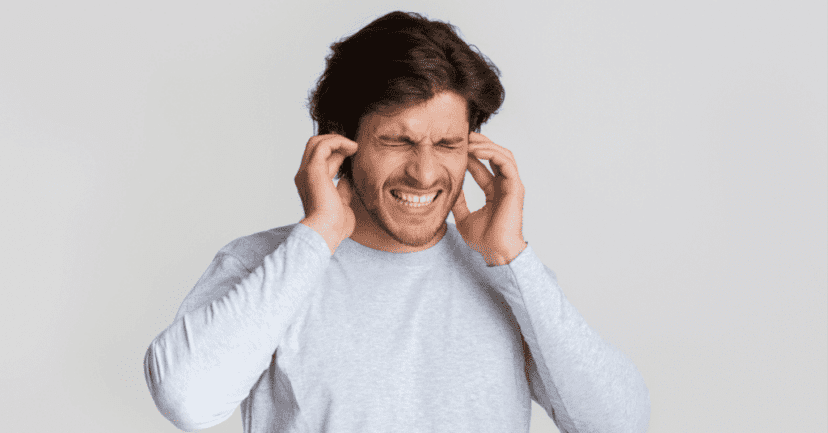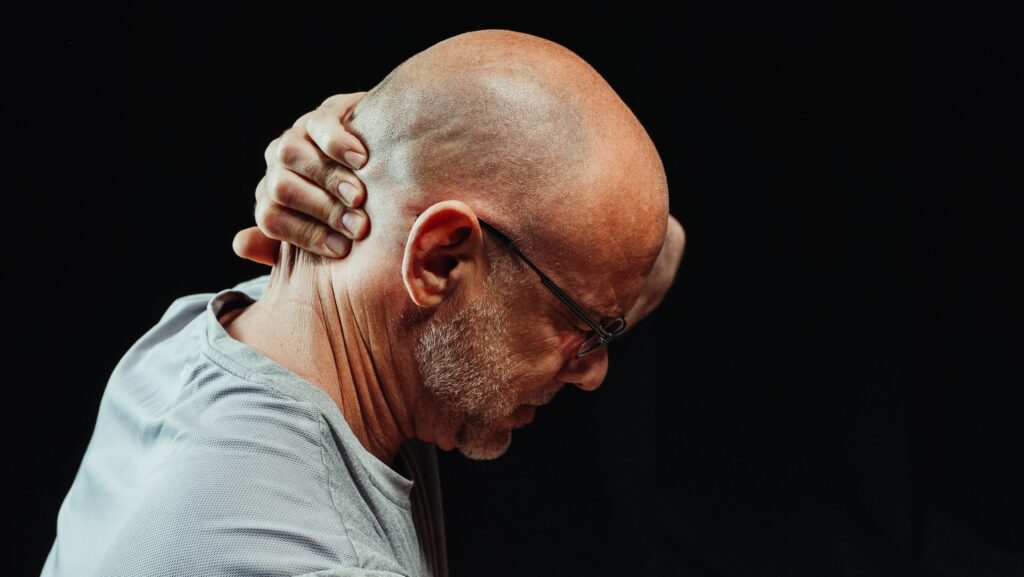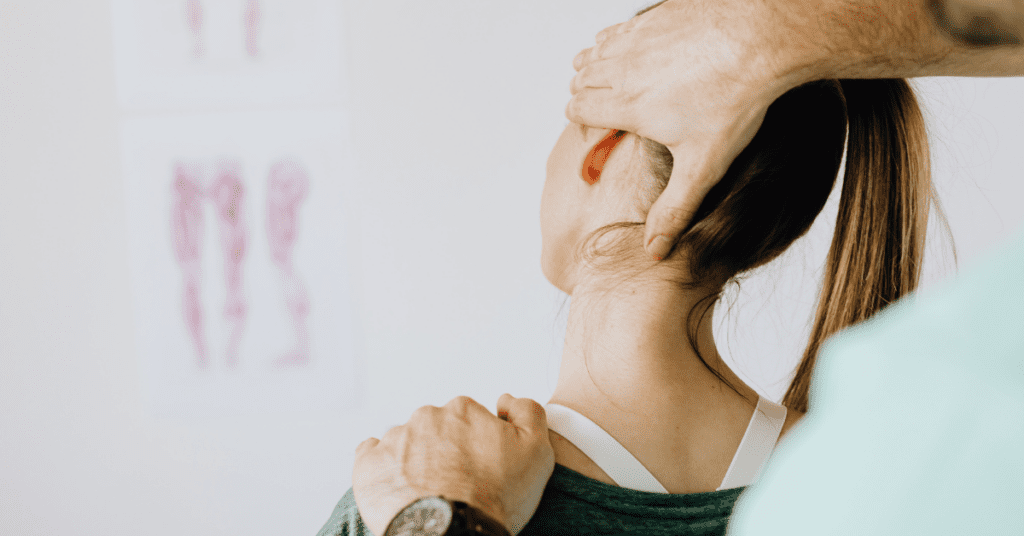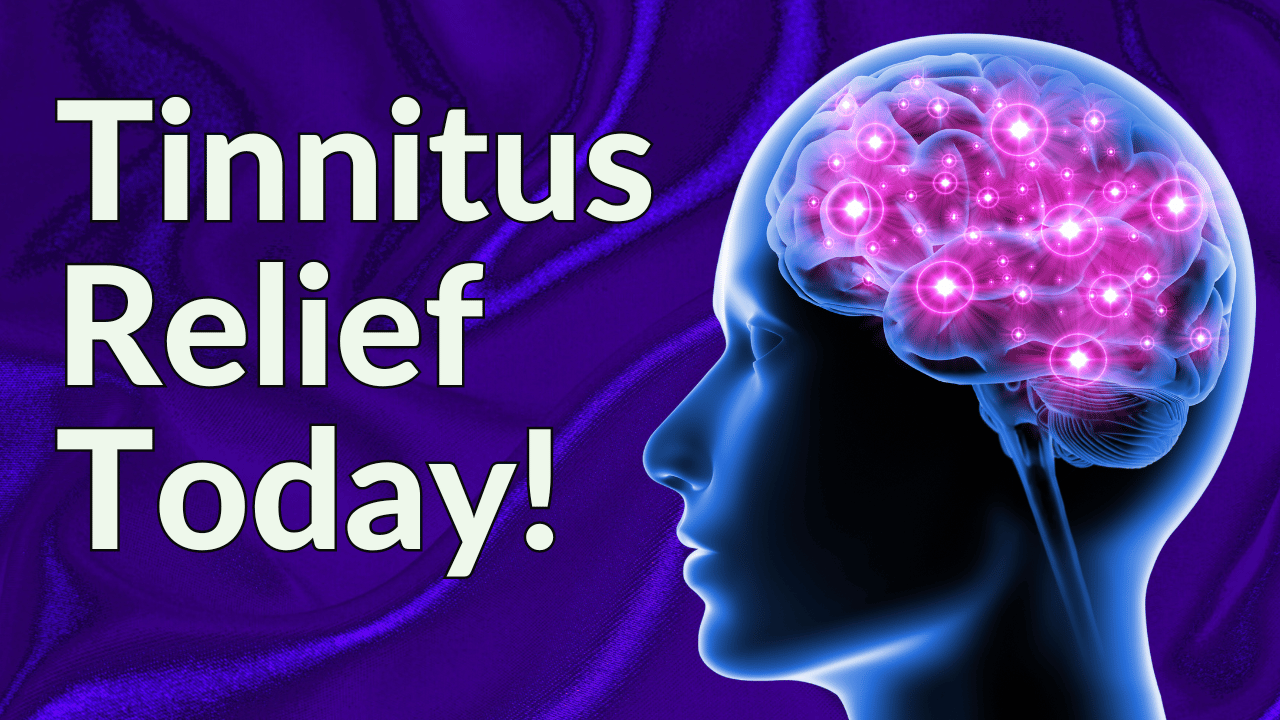If the ringing in your ears just won’t stop, you may find yourself wishing you could adjust your ears. Technically, that’s possible. An ear adjustment is a procedure that chiropractors and other trained professionals can do to relax and mobilize the tissues in your ear. If you’re experiencing somatosensory tinnitus (that is, tinnitus that’s related to your body position or tension within your head, neck, or jaw muscles), you might be able to find tinnitus relief through chiropractic care.
What Is Tinnitus?
Tinnitus is defined as the perception of sound in one or both ears when there is no external source. Most people experience brief bouts of tinnitus that usually goes away within a few minutes, however for others, tinnitus can be chronic, loud, and even disruptive to their daily life.
"Treble Health helped me reduce my tinnitus by about 80%, and now I can live my life again!"


"Treble Health helped me reduce my tinnitus by about 80%, and now I can live my life again!"
– Steve D.
Book a free consultation to learn which Treble Health solution is right for you. Join Steve and thousands more who have found lasting tinnitus relief.
There are two primary types of tinnitus: subjective and objective. Subjective tinnitus, which is by far the most common type, is when you perceive a sound that nobody else can hear. It’s often caused by damage to the inner ear, auditory nerve, or the fragile hair cells in your inner ear.
Objective tinnitus can be heard by other people. This type is usually related to pulsatile tinnitus, a condition in which you hear a whooshing sound that’s synchronized to your heartbeat. This is usually caused by an issue with blood flow, so your doctor may be able to hear it with a stethoscope. You should see a doctor about pulsatile tinnitus, since it may be related to circulatory or heart conditions.
Common Tinnitus Symptoms



The most obvious symptom of tinnitus is the perception of a phantom sound. These sounds vary from person to person, and can range from barely audible to intense and overwhelming. Most tinnitus sounds can be described as:
- High pitched ringing
- Hissing
- Roaring
- Buzzing
- Whistling
- Pulsing
- Tones
For some people with severe, bothersome tinnitus, the persistent sound can get in the way of their daily life. The constant sound may make it difficult to pay attention or block out background noise. Some people experience insomnia, anxiety, depression, or other worsened mental health conditions.
Causes Of Tinnitus
Chronic tinnitus may be its own condition with no known contributing factors, but there are several common underlying causes:
- Age-related hearing loss. Hearing loss, whether it’s related to the natural aging process or not, is the number one cause of tinnitus. As many as 90% of people with hearing loss experience tinnitus.
- Loud noise exposure. A lifetime of exposure to loud noises or a single extremely loud sound can cause ear damage and lead to chronic tinnitus.
- Earwax blockage. Earwax is healthy, but if it builds up, earwax blockage can lead to uncomfortable irritation, infection, and hearing changes. Safe earwax removal can treat tinnitus very quickly.
- Stress. Tinnitus itself is stressful, and you might experience symptoms as a reaction to stress or anxiety.
- Head injury or trauma. Many people who sustain a head or neck injury experience tinnitus, often due to changes in blood flow, nerve damage, or new changes to the neural pathways.
- Meniere’s disease. Debilitating vertigo, headaches, hearing loss, and tinnitus characterize this uncommon inner ear disease.
- Ear infections. The pressure, inflammation, and blockages related to ear infections can easily trigger tinnitus in one ear or both.
- Acoustic neuroma. An acoustic neuroma is a benign tumor that develops on the auditory nerve. This damage to your auditory nerve causes permanent damage to the inner ear structures that are responsible for hearing and auditory processing, leading to tinnitus.
- Disorders outside the auditory mechanism, such as high blood pressure, a temporomandibular joint disorder (TMJ) or neck injury may cause or worsen tinnitus.
How Anatomy And Physiology Can Impact Tinnitus
Before diving into how ear adjustments for tinnitus may help, it’s important to understand a little about the physical relationship between your ear and the surrounding muscles, joints, and nerves.
The human ear is made up of intricate and fragile components, so damage or pressure on these structures can cause a ringing sound. Sound waves travel past the outer ear and through the middle ear, where it causes the eardrum and three tiny bones to vibrate and amplify sound. From there, these vibrations enter the fluid-filled inner ear. The cochlea, which houses thousands of tiny hair cells, converts sound signals into electrical impulses that the brain interprets as sound. When any of these delicate structures are compromised due to injury, age-related changes, exposure to loud noises, or physical changes, it can lead to tinnitus.
Certain parts of the ear are particularly susceptible to somatosensory tinnitus, where movements or sensations in the head or neck can trigger the perception of phantom sounds. The temporomandibular joint (TMJ) is very close to the inner ear structures, so if you’re clenching your jaw or grinding your teeth, the pressure, irritation, and strain on these muscles and joints can inflame the areas around the ear and trigger tinnitus. It is suspected that this inflammation can also be a potential cause for Eustachian Tube Dysfunction, which has been linked to changes in hearing, aural fullness, as well as tinnitus and increased risk of ear infections. Muscle tension or spasms in the head, neck, face, or shoulders may also play a role in tinnitus, since this can affect blood flow and interrupt normal nerve signaling. With incomplete or unexpected stimuli, the ear misfires these signals and the brain attempts to fill in the gaps with the sound of tinnitus.
Physical blockages – like from infection, fluid, excessive earwax, or foreign objects – can also impact auditory processing and lead to tinnitus. Manipulating the ear can help take off some of the pressure, but to avoid injury or aggravating your condition, you should always leave it to a trained professional.
What Is Somatosensory Tinnitus?
For some people, tinnitus is “all in their head.” It’s very real, but it is perceived as a sound that is unrelated to any stimuli, physical movements, or other explainable causes. However, somatosensory tinnitus is a term that is used to describe tinnitus that is related to certain movements, muscle contractions, body positions.



Systems that can impact the auditory system and provoke tinnitus include somatosensory (referring to sensation in the body), somatomotor (referring body movements) and visual-motor (observing and interpreting visual cues). Some common tinnitus triggers include:
- Jaw movements or clenching
- Tilting or turning your head or bending your neck
- Pressure on your head or neck
- Touching or manipulating your ears
- Body positions, like bending over or lying down
- Muscle tension or spasms
- Physical exertion or exercise
- Movement of certain facial muscles
- Moving the eyes vertically or horizontally
- Viewing certain visual patterns or lights
How Is Somatosensory Tinnitus Diagnosed?
If you have somatosensory tinnitus, you’ll likely know which movements or stimuli set off your tinnitus, but you may still need a diagnosis. The first step is to rule out any underlying condition and understand your physiology through a physical exam. One or more of these specialists may help pinpoint somatosensory tinnitus:
- Neurologist. A neurologist specializes in the brain and nervous system, so this doctor is highly skilled at understanding how your nervous system interprets stimuli.
- Otolaryngologist. Better known as an ear-nose-throat doctor (or ENT), an otolaryngologist may be able to determine if your tinnitus has a physical cause related to these body parts.
- Dentist. It may come as a surprise, but your dentist may be able to provide an explanation for your persistent tinnitus – especially if the ringing in your ears is specifically linked to movement of your jaw, teeth grinding or clenching.
- Physiotherapist. Pain management, mobility, and motor function may all be related to somatosensory tinnitus.
Next, you’ll likely have an audiological evaluation. An audiologist will determine if you have hearing loss, if your hearing ability is symmetrical or asymmetrical, and whether or not you have any ear disorders or physical issues.
When reaching a diagnosis, your doctor will consider your medical history. Your doctor will be especially focused on:
- Any history of head or neck trauma
- Whether tinnitus triggered by movement of the jaw, cervical spine, or shoulders
- Your history of dental issues or ear disorder
- Whether you experience pain and tinnitus simultaneously or separately
- If tinnitus worsens when not maintaining good posture
- Changes in tinnitus quality, pitch, or loudness – especially when moving muscles of the head, neck, or upper cervical spine.
How Is Somatosensory Tinnitus Treated?
If your tinnitus symptoms are related to muscle tension, your doctor will likely recommend relaxation techniques and exercises. Stretching exercises, rotational movements, and breathing techniques may help ease the strain. If not, localized lidocaine injections could help.
Other treatment options include:
- Myofascial trigger point deactivation via local anesthetic injections
- Training exercises
- General exercises
- Repeating movements that trigger or modulate tinnitus symptoms
- Transcutaneous nerve stimulation
- Hypnosis
- Botox
For some people, chiropractic adjustments like manual therapy, upper cervical spine manipulation, or an ear adjustment might do the trick. Spinal manipulation, especially in the upper cervical area, can be an effective treatment for tinnitus.
Does Chiropractic Care For Tinnitus Work?



If, after ruling out underlying conditions and working toward reducing pain, you are still experiencing tinnitus, chiropractic treatment could help. Upper cervical chiropractic care may quiet that constant buzzing, hissing, or ringing in your ears – especially if your tinnitus is related to a pain in the neck.
Upper cervical chiropractic treatment for tinnitus works by making small, precise adjustments to the bones in your neck that can be tremendously helpful for boosting your quality of life. An ear adjustment focuses more on the ear itself as this technique relaxes the muscles around the ear and eases pressure, which may quiet tinnitus. An ear adjustment is also specifically aimed at trying to briefly open up the Eustachian tube, allowing for drainage of any fluid that has built up, allowing ear pressure to equalize and allowing muscles around the Eustachian tube to stretch and relax, therefore hopefully going back to normal function.
Generally speaking, chiropractic management focuses on spinal and musculoskeletal adjustments to improve your body function. Some of these adjustments may reduce somatosensory tinnitus, but it’s important to check with your physician first.
Other Tinnitus Treatment And Management Techniques
Not all tinnitus cases can be treated through an ear adjustment. Thankfully, there is a wide range of management options and ways you can treat that unpleasant ringing in your ears.
- Sound masking. Low-level background noise can help distract you from the sound of tinnitus. White noise machines, nature sounds, or specially designed tinnitus maskers can help make tinnitus less noticeable.
- Sound therapy. Sound therapy uses customized sounds to distract your mind from focusing on tinnitus. This can help habituate you to the presence of the sound so you hear it less and less.
- Tinnitus retraining therapy (TRT). The brain is very able and willing to learn, so by retraining the brain through a combination of sound therapy and counseling, you can reduce your emotional response to the constant sound.
- Cognitive behavioral therapy (CBT). A common therapeutic technique for changing thought patterns and managing stress, CBT can help smooth out the psychological effects of tinnitus.
- Hearing aids. Hearing aids are especially beneficial for people with hearing loss. By amplifying wanted sounds and improving overall hearing ability, hearing aids can make tinnitus less noticeable and help improve your communication.
Whatever tinnitus treatment you choose, working with your doctor to find an effective strategy can drastically improve your quality of life. For some people, chiropractic care can be a great solution for treating tinnitus. In the end, exploring your opportunities is key to finding the strategy that works best for you.
Next Step: Book Free Consultation
- 75% of patients reduced their tinnitus within three months after following our recommendations.
- "I feel like Treble Health literally gave me my life back." - Randy S. (verified customer)
- Join thousands of people who have reduced their tinnitus after scheduling a free consultation.


















